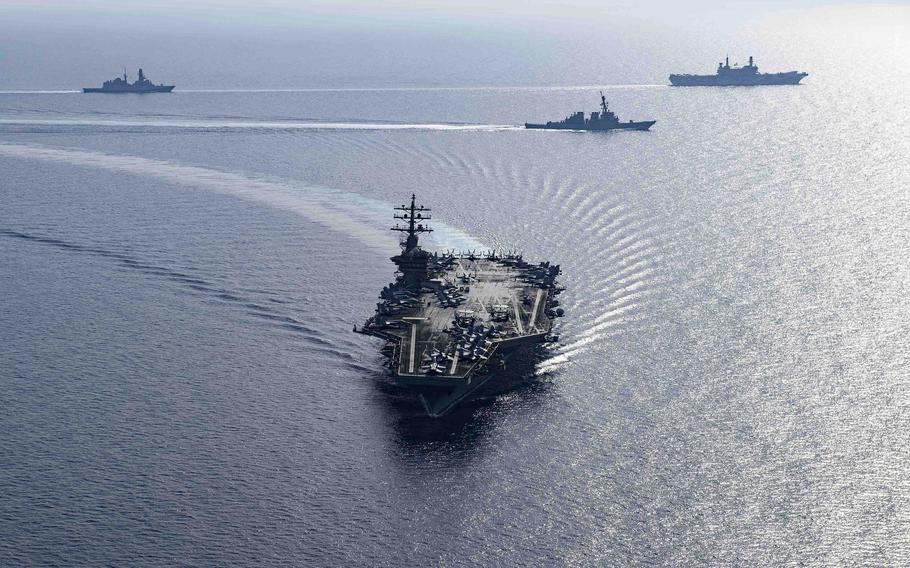
The aircraft carrier USS Dwight D. Eisenhower and destroyers USS Laboon and USS Gravely steam in formation with the Italian aircraft carrier ITS Cavour in the Red Sea on June 7, 2024. (Kade Bise/U.S. Navy)
NAPLES, Italy — The experiences of sailors who spent months fighting Houthi militant threats in the Red Sea at operational levels unseen since World War II will shape the next generation of naval warriors, a senior Navy official says.
That knowledge, gleaned from nearly seven months in “the crucible of combat,” will be used well beyond the Middle East, said Rear Adm. Kavon Hakimzadeh, commander of Carrier Strike Group 2.
“The lessons we have learned … apply to naval warfare anywhere,” Hakimzadeh told Stars and Stripes on Monday. “These crewmembers in the strike group are going to be the next generation of instructors, the next generation of assessors, the next generation of trainers.”
It’s too early to say how sailors will process their experience into lessons for others, Hakimzadeh said.
But during the historic deployment, strike group members grew adept at compartmentalizing stress so they could remain focused on their jobs. They also faced multiple scenarios that called for a rapid threat assessment and made very quick decisions on how to counter threats using different weapon systems, he said.
They frequently worked with engineers and support personnel stateside to brainstorm how to stay ahead of ever-changing Houthi tactics and capabilities, Hakimzadeh said.
They also saved the lives of 25 mariners from two different ships struck by missiles over two days in June, while many other vessels in the area ignored those calls for help, he said.
However, the priority now is to ensure that sailors have ample time to rest and reflect upon coming home.
“I want them to make sure they have thought through the story they are going to pass on to the folks that follow them,” said Hakimzadeh, who assumed command of the strike group in June.
The Dwight D. Eisenhower Carrier Strike Group is transiting the Atlantic Ocean as it returns to the U.S. after nearly nine months on deployment in the Middle East and eastern Mediterranean Sea.
About seven of those months were spent defending commercial and military vessels in the Red Sea, Bab-el-Mandeb and the Gulf of Aden against Houthi drones and missiles.
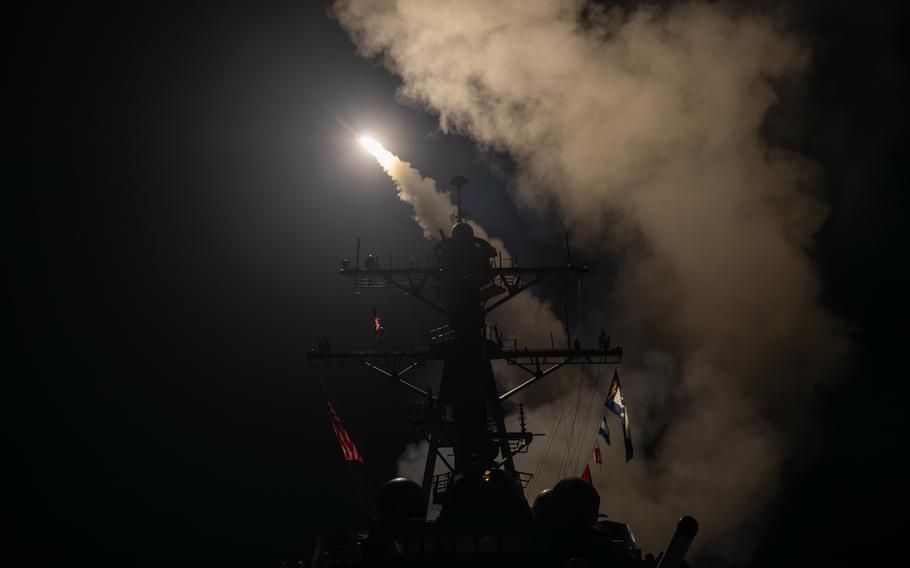
The destroyer USS Gravely launches Tomahawk missiles Jan. 12, 2024, in response to Houthi action in the Red Sea. The Gravely was one of seven U.S. Navy ships that received a combat action ribbon in April for performance under fire in the Middle East. (Jonathan Word/U.S. Navy)
During that time, the group’s cruiser and destroyers launched more than 180 missiles from their vertical launch systems in self-defense or as pre-planned strikes, Hakimzadeh said.
The group’s air wing expended 60 air-to-air missiles and released 420 air-to-surface weapons. All told, the strike group completed more than 13,800 flights totaling about 31,500 hours, he said.
“The numbers and varieties of weapon expenditures are for the most part unprecedented, especially from the surface ships,” said Hakimzadeh, who noted that the air wing numbers were about 1.5 times those expected during a full deployment. “That hasn’t happened before.”
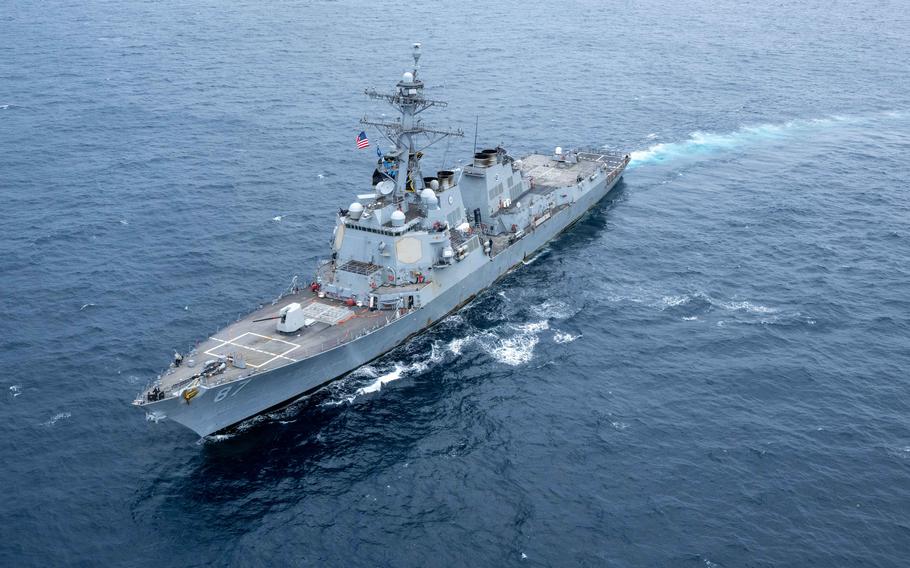
The destroyer USS Mason sails in the Red Sea on Jan. 31, 2024. Mason was one of seven U.S. Navy ships that received a combat action ribbon in April for performance under fire in the Middle East. (Christopher J Krucke/U.S. Navy)
As a result, the aircraft carrier USS Dwight D. Eisenhower received a combat action ribbon in April for performance under fire, among other awards. Six other Navy ships, including strike group members USS Philippine Sea, USS Gravely and USS Mason, also earned the ribbon.
Still, those efforts and those of other countries participating in the U.S.-led Operation Prosperity Guardian haven’t restored confidence among many commercial shippers.
In March, officials aboard Eisenhower acknowledged that the number of transits of container ships through the Red Sea had dropped considerably since the Iran-backed group began its attacks in November.
The Kiel Institute for the World Economy estimated in a July 2 report that the average daily number of container ships traveling through the Red Sea had declined 70.1% from the previous year.
Even so, thousands of ships — many under military escort — have safely transited the waterway since January.
However, Houthi militant attacks continue. For example, a June 12 missile and surface drone attack on a Greek-owned coal carrier saw the vessel sink six days later.
The lack of reassurance among commercial shippers is due to “the Pentagon’s mostly defensive strategy, not to the operators in the Eisenhower task force,” said James Holmes, chair of the maritime strategy program at the Naval War College in Newport, R.I. “They did their job.”
The deployment demonstrated the effectiveness of several Navy weapons that weren’t previously used in combat, including missiles like the SM-6, AGM-88E AARGM and AGM-154C JSOW, according to a strike group statement Tuesday.
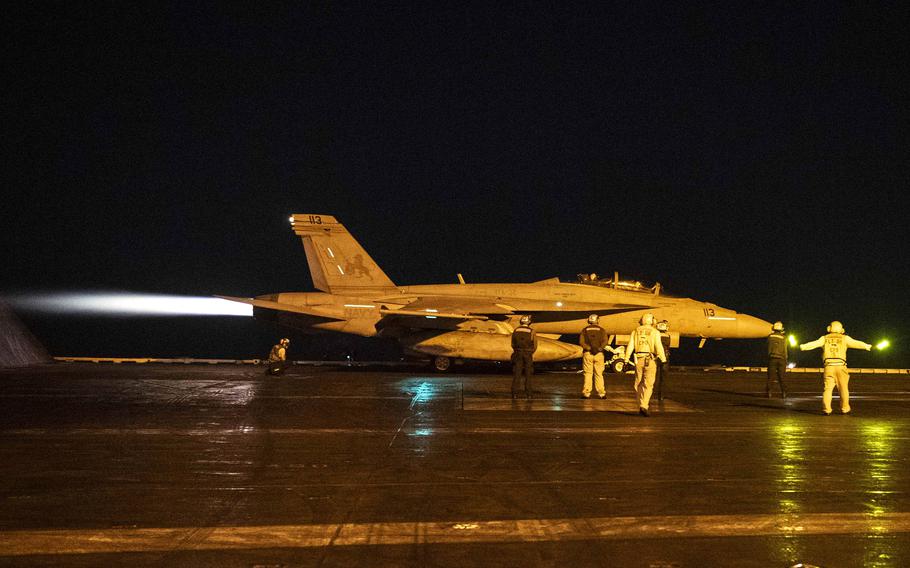
The aircraft carrier USS Dwight D. Eisenhower conducts flight operations in response to increased Houthi activity in the Red Sea on Feb. 23, 2024. The Eisenhower Carrier Strike Group was deployed to the U.S. 5th Fleet area of operations recently and is now heading back home to the United States. (Samantha Alaman/U.S. Navy)
The success of the new weapons was particularly notable against evolving threats, such as the Houthis’ ballistic missiles, Holmes pointed out.
The strike group also saw the first air-to-air engagement of a hostile aerial drone by a U.S. warship, first air-to-air engagement from an EA-18G Growler and use of the first AGM-114K Hellfire missile in combat engagement, according to the statement.
“Our ships took no hits, and that’s attributable not just to weapons and sensors but to the skill and elan of the crews using them,” Holmes said.
The lengthy stay in the Red Sea within the weapons range of the Houthis validated prior training while showcasing the agility and grit of the strike group’s sailors, Hakimzadeh said.
The pressure of combat helped mesh the strike group into a very effective team, he said.
“I believe every missile, every unmanned aircraft or boat, radar control station we took down reinforced this team’s purpose in being out there in the Red Sea,” he said. “It was a righteous mission.”
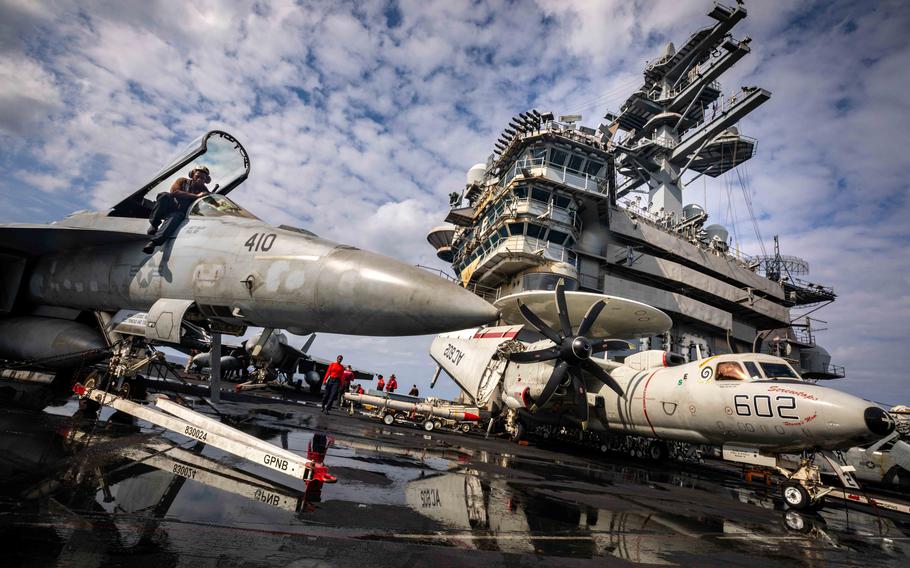
Sailors work on the flight deck of the aircraft carrier USS Dwight D. Eisenhower in the Red Sea on Feb. 6, 2024. The Eisenhower strike group is now transiting the Atlantic Ocean as it returns to the U.S. after nearly nine months on deployment in the Middle East and eastern Mediterranean Sea. (Keith Nowak/U.S. Navy)